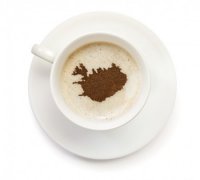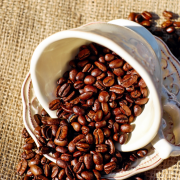How is the planting of single bean in Honduras? introduction to the award of single bean in Honduras

For professional baristas, please follow the coffee workshop (Wechat official account cafe_style)
COPAN
The Copan producing area is located in the city of Copan in western Honduras, of which the most famous is the local Mayan site. The region is adjacent to Guatemala and regions like this remind me to attach importance to the actual origin of coffee rather than to producing countries. In fact, the division of countries is somewhat arbitrary, because it is difficult (unfortunately) for consumers to distinguish between coffee beans from Honduras or from Guatemala. Copan production area is located in the north of the Santa Barbara Coffee area.
Altitude: 1000-1500m
Harvest: November-March
Variety: bourbon, Caturra,Catuai
OPALACA
Opalaca producing areas are located in the southern part of Santa Barbara, as well as Intibuka and Intibuca and Lempira. Named after the Opalaca Mountains that stretch through the area.
Altitude: 1100-1500m
Harvest: November-February
Variety: bourbon, Catuai,Typica
High-quality coffee in Honduras uses water washing to deal with coffee beans, usually after soaking, when the defective fruit will surface, it can be discarded first. Then put the good fruit into the fruit peeling machine and peel off the peel with the rotating force of the machine. Peeled fruits are screened by machines to select fruits of high quality. Usually the bigger the fruit, the better the maturity. Coffee in Honduras is dried in the sun, so there is always a hint of fruit in the taste.
Honduran coffee has a rich and mellow taste, taste is not astringent, not sour, mellow and aroma are very high, quite personality. Honduran coffee can lead to multiple levels of flavor depending on the degree of roasting. Moderate baking can maximize the sweetness of beans, while deep baking increases bitterness, but sweetness does not disappear. Generally speaking, medium roasting has the best taste and rich and unique aroma, which is favored by coffee lovers in Honduras.
Flavor and taste characteristics: good flavor, rich and mellow, suitable for mixed drinking.
Honduras is located in the north of Central America, facing the Caribbean Sea to the north, the Gulf of Fonseca in the Pacific Ocean to the south, Nicaragua and El Salvador to the east and south, and Guatemala to the west, mostly mountains and plateaus. It has a tropical climate, mild temperature and abundant rainfall, so it is an ideal place for coffee growth.
Honduras produces two kinds of coffee of very good quality, which are highly respected by coffee lovers. One is the "Highland Coffee", which is grown at an altitude of 1000 Muhammad 1500 Michael, and the other is the "selected Highland Coffee", which represents the highest level of Honduras, which is grown at an altitude of 1500 Murray 2000 Michael. Most of the Honduran coffee is exported to the United States and Germany.
The granules of coffee beans in Honduras are large in shape, uniform in size and glossy in color. In order to facilitate harvesting, farmers will trim the coffee trees to no more than 150 centimeters, because if they grow too high, they have to set up ladders to pick, which is not only time-consuming, but also may damage the trees by bending branches. As the ripening period of each fruit of coffee beans is different, in order to maintain the good quality of coffee beans, it is necessary to pick them manually, and then select the ripe fruits. For coffee fruits of the same branch, it often takes several weeks to pick them all.
Honduras Honduras
Population: 8250000
Although it is not described by HCAFE as a coffee growing area, many roasters label coffee from the Santa Barbara region of Honduras (Santa Barbara), and several coffee areas cross into Santa Barbara (a country's government ministry). Some would say that it needs its own description, but the more appropriate way seems to be to list the planting areas in accordance with official principles. There are also some excellent Pacas varieties from the Santa Barbara region, which are of good quality and have a unique and fruity flavor, which is definitely worth pursuing.
Important Notice :
前街咖啡 FrontStreet Coffee has moved to new addredd:
FrontStreet Coffee Address: 315,Donghua East Road,GuangZhou
Tel:020 38364473
- Prev

What are the suggestions for the baking of Honduran single beans in Honduras?
For professional baristas, please follow the Coffee Workshop (official Wechat account cafe_style). The OPALACA Opalaca production area is located in the southern Santa Barbara area, as well as Intibuka and Intibuca and Lempira. Named after the Opalaca Mountains that stretch through the area. Altitude: 1100-1500m harvest: November February varieties: bourbon, Catuai,Typica
- Next

How to deal with the processing of Honduras single bean? how to divide the grade of Honduras single bean?
For professional baristas, please follow the coffee workshop (Wechat official account cafe_style) Honduras Honduran population: 8250000 although it is not described by HCAFE as a coffee growing area, many roasters label coffee from the Santa Barbara region of Honduras, and several coffee areas cross the border into Santa Barbara (the government of a country).
Related
- Does Rose Summer choose Blue, Green or Red? Detailed explanation of Rose Summer Coffee plots and Classification in Panamanian Jade Manor
- What is the difference between the origin, producing area, processing plant, cooperative and manor of coffee beans?
- How fine does the espresso powder fit? how to grind the espresso?
- Sca coffee roasting degree color card coffee roasting degree 8 roasting color values what do you mean?
- The practice of lattes: how to make lattes at home
- Introduction to Indonesian Fine Coffee beans-- Java Coffee producing area of Indonesian Arabica Coffee
- How much will the flavor of light and medium roasted rose summer be expressed? What baking level is rose summer suitable for?
- Introduction to the characteristics of washing, sun-drying or wet-planing coffee commonly used in Mantenin, Indonesia
- Price characteristics of Arabica Coffee Bean Starbucks introduction to Manning Coffee Bean Taste producing area Variety Manor
- What is the authentic Yega flavor? What are the flavor characteristics of the really excellent Yejasuffi coffee beans?

